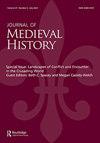Governing through influence at the thirteenth-century papal court
IF 0.3
2区 历史学
0 MEDIEVAL & RENAISSANCE STUDIES
引用次数: 0
Abstract
ABSTRACT This article uses a case study from the late 1230s to expand our understanding of how the papacy exercised power in the high Middle Ages. In the early thirteenth century, the papal court was one of Europe’s most important and innovative governing institutions. But while many historians have described the development and structure of the administrative and legal tools popes used to implement their will, less well understood is how the papal court used those tools to get things done. In 1237–8, the papal court under the leadership of Pope Gregory IX spent 14 months trying to help Florentine merchants collect money they had lent to crusaders in France. Using a remarkable set of 22 letters from Gregory’s registers, the following pages unpack the details of this case and argue that personal influence was essential to the papacy’s efforts to bring it to a successful conclusion.在十三世纪的教皇法庭上通过影响力进行统治
本文以1230年代晚期的一个个案研究为例,扩展我们对中世纪盛期教皇如何行使权力的理解。在13世纪早期,教皇法庭是欧洲最重要和最具创新性的管理机构之一。但是,尽管许多历史学家描述了教皇用来实现其意愿的行政和法律工具的发展和结构,但人们对教皇法庭如何使用这些工具来完成任务却知之甚少。1237年至1238年,在教皇格里高利九世的领导下,教皇法庭花了14个月的时间,试图帮助佛罗伦萨商人收回他们借给法国十字军的钱。从格列高利的登记册中收集了22封书信,下面几页揭示了这个案件的细节,并认为个人的影响对教皇成功结束这件事的努力至关重要。
本文章由计算机程序翻译,如有差异,请以英文原文为准。
求助全文
约1分钟内获得全文
求助全文
来源期刊

JOURNAL OF MEDIEVAL HISTORY
MEDIEVAL & RENAISSANCE STUDIES-
CiteScore
0.60
自引率
0.00%
发文量
29
期刊介绍:
The Journal of Medieval History aims at meeting the need for a major international publication devoted to all aspects of the history of Europe in the Middle Ages. Each issue comprises around four or five articles on European history, including Britain and Ireland, between the fall of Rome and the Renaissance. The Journal also includes review articles, historiographical essays and state of research studies.
 求助内容:
求助内容: 应助结果提醒方式:
应助结果提醒方式:


